We're an affiliate
We hope you love the products we recommend! Just so you know, we may collect a share of sales or other compensation from the links on this page. Thank you if you use our links, we really appreciate it!
The charge controller in a camper van conversion’s or RV’s DIY solar electrical system is the go-between for the solar panels and battery.
Your charge controller regulates what goes into your batteries based on what they need. Imagine the charge controller turning a water faucet up or down based on the volume of water (energy) the batteries need.
The charge controller regulates the amperage and voltage of incoming power from the panels. We will make sure those specs are compatible with the rest of the electrical system.
Our Favorite Solar Charge Controller for Van & RV Electrical System
Our Favorite MPPT Charge Controller
Renogy DCC50S MPPT Solar Charge Controller and DC-to-DC/Battery-to-Battery Charger
This combo charge controller includes an alternator to solar battery charger. In additional to solar power, it charges your battery every time you drive. This combo device is cheaper than buying the components separately, and simplifies your electrical system.
(use our link and promo code for 10% off any item. Search item “DCC50S”)
We’re excited by the new DCC50S Charge Controller MPPT from Renogy. This thing wasn’t out yet when we designed our electrical system in 2018. What’s cool is it’s a combo Solar Charge Controller and Battery-to-Battery (B2B) Vehicle Alternator Charger. Learn more about charging from your vehicle’s alternator.
Traditionally the charge controller and B2B charger were two separate pieces of equipment. We just have a stand-alone charge controller and didn’t want to buy another piece of equipment, so we don’t have a B2B charger and can’t charge from the van’s alternator. If designing our system today, we’d definitely buy the Renogy DCC50S. It will even trickle charge your vehicle battery once it senses your house (solar) battery is full.
The solar and alternator capabilities of the DCC50S have standard specs that match those from any stand-alone equipment. It can function with up to 660W of solar panels (that’s a lot!), and any vehicle alternator. The only functionality it’s missing is an LCD screen or Bluetooth to display charging levels. Fortunately, most of these stats are displayed on the battery monitor you’ll want to be getting to monitor your battery levels and health.
There has been some confusion on the specs, so we confirmed with Renogy. It has 50A total current capacity. This is not mutually exclusive – for example, if there is no solar coming in, then it can pass up to 50A from the alternator. Vice versa if you aren’t driving and there is lots of sun, 50A can come in from the solar. This is a good design because the device switches its 50A capacity between whatever charging source is working for you at the moment.
What Does a Charge Controller Do?
A charge controller is basically a voltage and/or current regulator from the solar panels to keep batteries from overcharging. Most “12 volt” panels put out about 16 to 20 volts, so if there is no regulation the batteries will be damaged from overcharging. Batteries need voltage ranging from about 10.5 to 14.6 volts, depending on the state of charge of the battery, the type of battery, and temperature.
What is the difference between MPPT vs. PWM Charge Controller?
First off, according to multiple manufacturers, MPPT (Maximum Power Point Tracking) charge controllers “provide an additional 10‐15% of charging capability” compared to a standard PWM (Pulse Width Modulation) controller. This efficiency is particularly evident under cold conditions, a low battery charge, or with long wire runs. Our recommended Renogy DCC50S is an MPPT controller.
An MPPT controller must be used if your solar panels are at a different voltage than the battery. This would be the case when two 12V panels are wired in series, which adds up each panels’ output voltage to at total of at least 24V (or closer to 38V if producing peak power). A PWM controller could not down regulate this voltage to charge a 12V battery.
An exception to this is actually our recommended DCC50S MPPT controller, which cannot be used with solar panel voltage greater than 25V, so multiple panels would need to be wired in parallel so as to not increase their voltage.
If you want to know the ‘why’ and ‘how’ behind this MPPT efficiency like we did, read on! If not, we won’t hold it against you (but you may regret skipping this info if you ever run into system issues 🙂 ).
For example, let’s use the specifications from our preferred solar panel, the Renogy Flexible 160 watt panel, and battery, the 125 Amp-hour AGM battery by VMAX (yes, we’d choose a flexible instead of rigid panel. We explain it in our Guide to Choosing Solar Panels).
This 160 watt panel has an operating voltage of 19.1 volts and current of 8.4 amps (19.1V x 8.4A = 160W).
The current (amps) is what matters to your batteries, which receive 8.4 amps.
The battery is sitting at 12.5 volts, because it’s at about 60% state of charge (per VMAX’s chart). Those 8.4 amps are effectively charging only 105 watts (12.5V x 8.4A = 105W), a loss of 55 watts from what your panel was generating! That lost power just gets converted into heat.
An MPPT controller adjusts incoming voltage and amperage in real-time to minimize this lost current.
What to Look for in a Solar Charge Controller
Choosing the Amperage of the Charge Controller
The amperage rating of the charge controller needs to support the watts of solar panels installed. The more watts producing power, the more amps passed to the charge controller which it needs to handle.
Each manufacturer has slightly different ratings for their controllers. These are the regular ranges and other manufacturers’ ratings may vary by +/- 30 watts or so.
- 50A: up to 660 watts – Renogy DCC50S
- 40A: up to 520 watts – Renogy Rover 40A
- 30A: up to 440 watts – Victron 100|30
- 20A: up to 290 watts – Victron 100|20
- 15A: up to 220 watts – Victron 75|15
Checking Compatibility with the Battery
Different battery types need to be handled differently by the charge controller. All quality charge controllers are compatible with the standard Lithium, AGM, and Flooded Lead Acid battery types. At initial set-up of the charge controller the battery type is selected. Some PWM controllers may not work with all batteries, so be sure to read their spec sheet before buying a cheaper option! We’ve got a run down for Choosing a Battery.
Best Stand-Alone Charge Controllers
Living in our van full-time, it’s our opinion the Renogy DCC50S is the appropriate choice for all full-time van dwellers who can afford it. But let’s say you’re a weekend van lifer, or you’re just on a strict budget and have a limited solar setup. Then you don’t really need the full power of the Renogy DCC50! In that case, there’s plenty capable choices:
Our Favorite Stand-Alone MPPT Solar Charge Controller
Victron SmartSolar MPPT Solar Charge Controller
| AMPS | WATTS | PRICING |
|---|---|---|
| 15A | 220W | |
| 20A | 290W | |
| 30A | 440W |
The Victron SmartSolar is the industry leading MPPT charge controller at a reasonable price point. It’s got an awesome phone app that displays loads of real time and historical data, and can charge any type of battery. Victron is an international solar device company founded in 1975 and the charge controllers have a 5-year warranty. You can pair their BMV712 Battery Monitor (we probably check our battery monitor 5 times a day) which provides info you need on daily energy usage, and will add way more historical data to their app.
Our Favorite Budget PWM Solar Charge Controller
AllPowers 20A PWM Solar Charge Controller
This 20A solar charge controller is the best choice for a budget charge controller. It can handle a small array of about 200 watts and works with AGM and Lithium batteries. We’re impressed by the 18-month quality-related warranty. The manual might be lacking, support is probably hard to get, and it might not be the most efficient, but the price can’t be beat!
More Charge Controller Resources
Renogy DCC50S Data Sheet (0.4MB pdf) and Manual (14MB pdf)
Victron MPPT Charge Controller Manufacturer Website (select the model, then downloads are available)
This was the most helpful video that shows how the Renogy DCC50S works and some testing. Once it’s all set up, here is Renogy’s instructional video on wiring:
Ready for more info?
Visit the Van Conversion Build GuideWe sincerely hope this information is helpful on your build journey!
This post contains affiliate links that may earn us a commission if a product is purchased. But, we always strive for the reuse and repurpose of materials – so we encourage searching for a local used option before buying from our links.

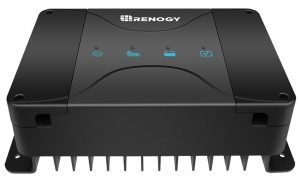
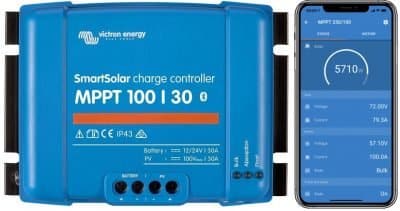
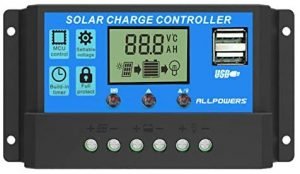
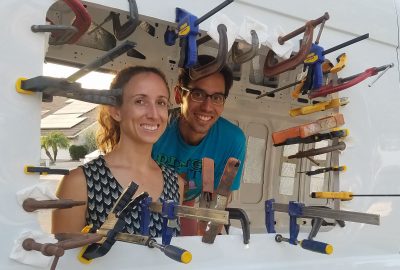

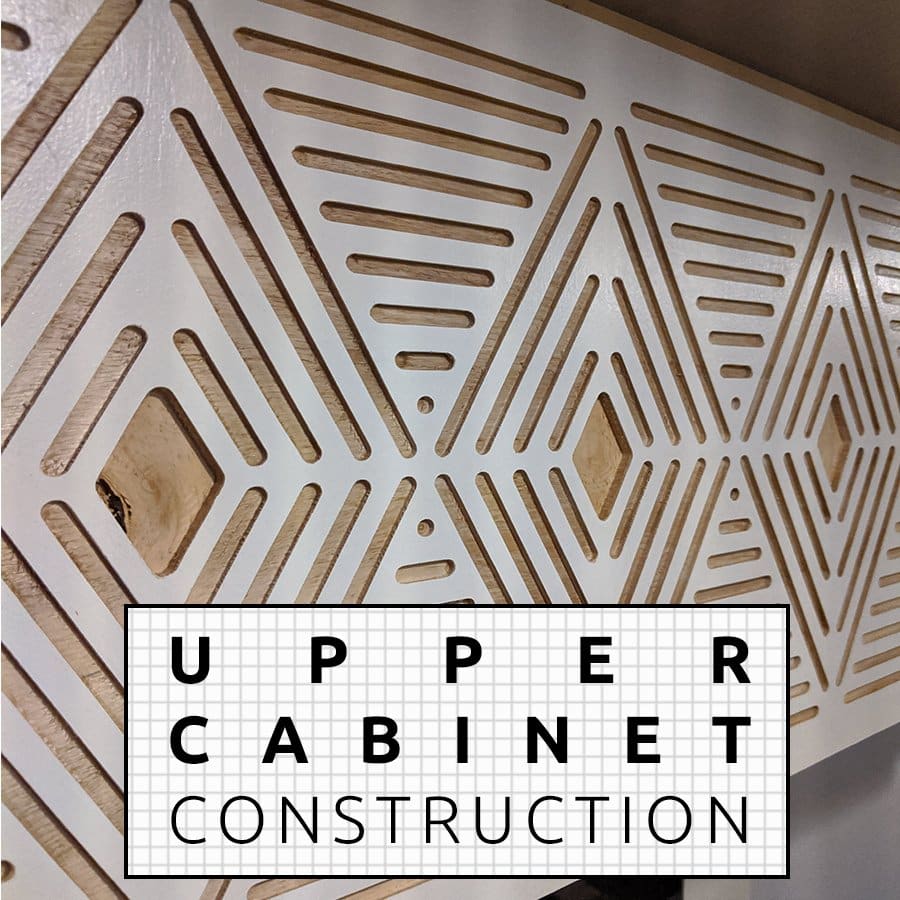
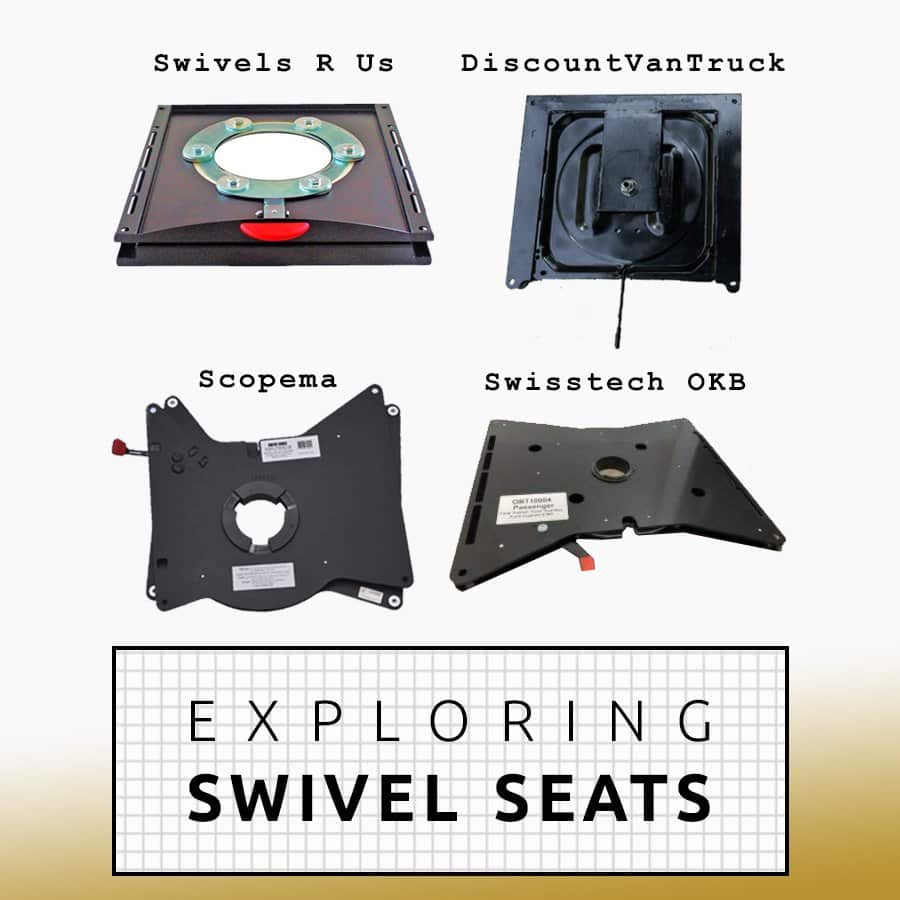
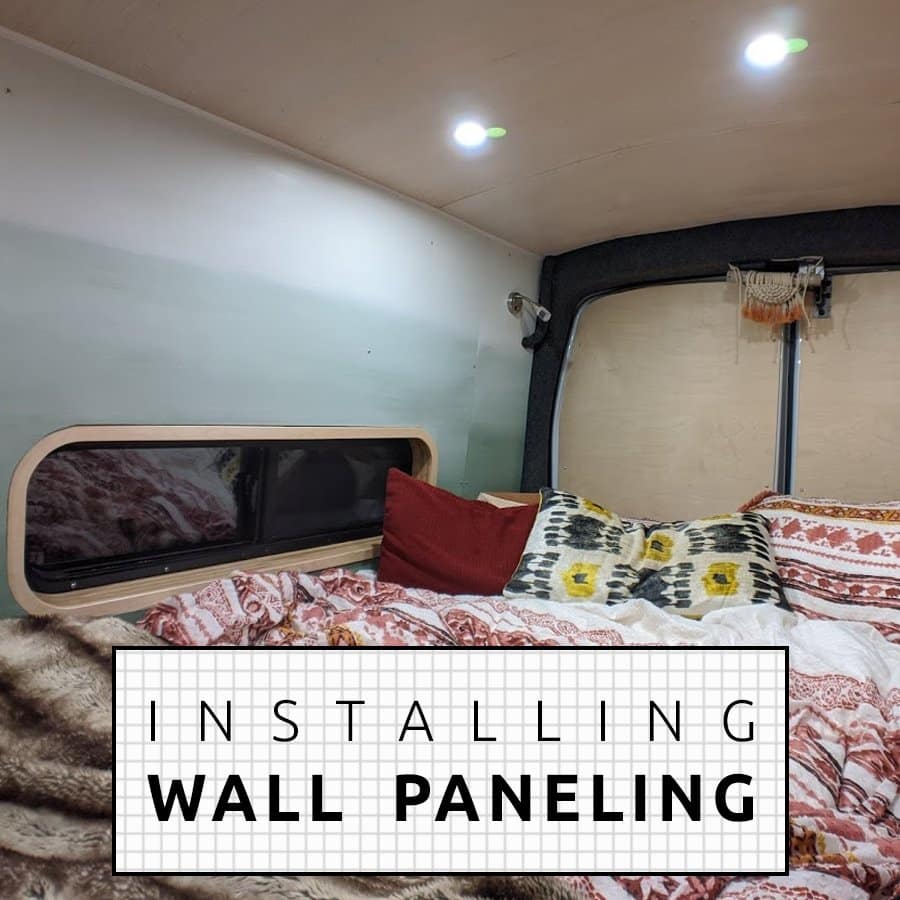
Thank you Thank you Thank you
Love n the tips with my conversion.
Show me more. Thanks again Jeff
I used a controller to resemblant charge my 16Ah 12V Lifepo4 battery with 2 100watt solar panels. It powers my DIY swamp cooler off the grid all day. fully amazing. Thanks Renogy for another great product. It’s perfect for what I demanded. I’ve several Renogy MPPT regulators and now this PWM regulator is the same high quality product.